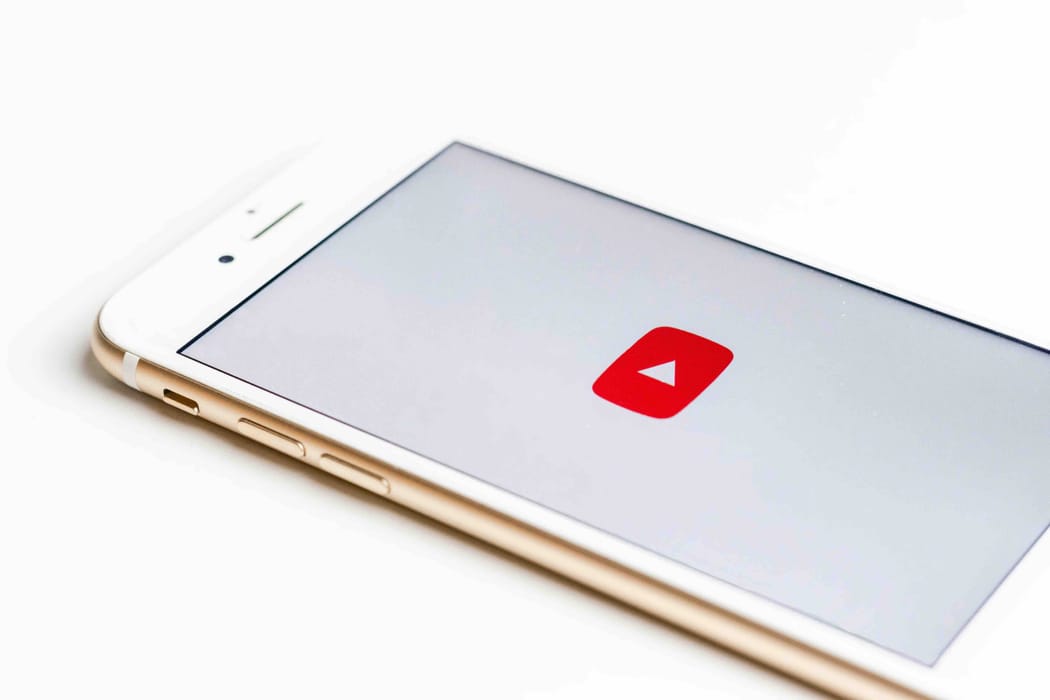YouTube is the perfect place to build an audience for your podcast. It’s got billions of users, and it’s the second most powerful search engine in the world. So if you’re trying to make your show more discoverable and gain new listeners, it’s without a doubt the best place to go.
But YouTube is fundamentally different from traditional podcast platforms. So you’ve got to treat it as such. Many podcasters try to get away with simply uploading their audio file against a still image background. That obviously saves a lot of time, but it rarely works as a means of bringing in new listeners.
To run your podcast on YouTube the right way, you need to optimize for an additional audience of viewers alongside your usual listeners. In this article, we’ve outlined some best practices you can follow to start growing your audience. We’ll cover:
- Why it makes sense to put your podcast on YouTube
- A step-by-step guide on uploading your podcast to YouTube
- Best practices for growing your YouTube subscriber numbers

Book Your Next Podcast Guest the Easy Way
With more than 70,000 members, MatchMaker.fm is the largest online community connecting podcasters & guests.
Join MatchMaker todayWhy Upload Your Podcast to YouTube?
If you use it right, YouTube can be amazing for growing your audience. It’s great for helping new people discover your content, and it reaches many more people than any traditional podcast platform. Here are our top 3 reasons why you might want to upload your podcast on YouTube.
1. It Has Massive Potential Audience Reach
People love YouTube. It has the kind of audience individual podcast apps just can’t compete with - more than 2.49 billion users, in fact. Each day, more than 100 million people log on to watch content.
YouTube is the most widely-used platform for listening to podcasts.
And it turns out, many of those people also love podcasts. YouTube has actually now become the most widely used platform used for listening to podcasts. So if your podcast isn’t on YouTube, there’s a huge audience you’re missing out on.
2. It’s a Powerful Search Engine
YouTube is also the second most powerful search engine in the world, beaten only by Google. So it’s a good place for new people to discover your content. Making a great podcast is all well and good, but discoverability has always been a problem in the industry. If new people can’t find your show through the Google or YouTube search bar, you’re going to struggle to grow.
Make videos that answer what people are searching for on YouTube, and you’ve suddenly got a brand new audience interested in what you’ve got to say.
3. YouTube Is Good at Building Communities
The problem with most podcast platforms is there’s never anywhere to have a real conversation with your audience. It feels like a one-way thing for many listeners. But with YouTube, they get to join in. The comments section is a big opportunity for you to connect with your audience, and show you really do care about their opinions. Of course, there will be trolls too, but you don’t need to give those commenters any attention or reinforcement by replying.
Engaging with your audience in the comments section not only helps to create an engaged and loyal audience, but it also helps with the YouTube algorithm. So the more you interact with your viewers, the more your video will be recommended to other people too. Don’t forget, even negative comments help boost your video via the algorithm, so the trolls can actually end up unintentionally helping you out.
4. Video Is Engaging
Video captures people’s attention like nothing else online. It’s so easy to drift off when listening to audio and get distracted as you multitask. Video retains attention in a less fragmented way.
Audio podcasts are perfect for people who want the flexibility of listening on the go. But giving people the option to sit down and watch a video adds a whole new way for people to enjoy your content. That means your audience can choose whatever works for them. Some may choose to listen to most episodes and watch the video version occasionally too.
How to Upload Your Podcast to YouTube
First thing’s first, let’s get you up to scratch on how to use YouTube as a creator.
When you’re filming, you should use your normal podcast microphone for the audio. That will get much better sound than the internal one on your camera.
Once you’ve synced video and audio, and done any editing on your video, you’re good to upload.
For more on recording and editing video, check out our full guide on video podcasts.
Step 1: Make sure you’re logged into your YouTube account. If you haven’t made a YouTube channel for your podcast yet, take some time to make one.
Step 2: Click the Create button, as circled below. Then click on Upload video.
Step 3: Select the correct file and upload it. Make sure your file is named something relevant, like the title of your podcast episode. Otherwise, managing your archive later down the line will be pretty tedious.
Step 4: Remember to give your video a good episode title, description and custom thumbnail. This is the difference between someone scrolling past, and someone stopping to check out your video, so it’s worth spending some time on. Your thumbnail is particularly important (more on that later).
Step 5: Now it’s time to publish your video. You can either upload it immediately or schedule it to go live at a later time.
That’s how easy uploading your podcast to YouTube is. There’s a bunch of other stuff you can mess around with, like tags, subtitles, and end cards. But the most important ones to focus on are the thumbnail, video title, and video description. Those are what make people stop and click, and they’re what YouTube uses for showing people relevant videos after typing something into the search bar.
9 Tips for Growing Your Podcast on YouTube
If you’re investing time and money into putting your podcast on YouTube, you may as well do it right. There’s no point wasting time on stuff that doesn’t work.
Luckily, we’ve got all the experience to know what will actually help people find your show - and what will completely turn them off. Follow these best practices and you’ll be on the right track to growing your audience in no time.
1. Don’t Just Upload Static Images
The easiest way to make your podcast into a YouTube video is to just stick a background image against your audio. But that won’t engage people.
If someone’s on YouTube, they’ve picked that platform specifically because they want to see videos. So if all you’ve got is an image, they’ll immediately get bored and click away. As mentioned before, you need to optimize for viewers as well as listeners if you want to gain new fans through YouTube.
2. Film Your Recordings
The easiest way to upload video is to simply record your episodes - whether it’s an interview recorded on Zoom or a solo podcast with you speaking directly to the camera. This isn’t the only way to make a video podcast. But it’s the cheapest and most straightforward, meaning it’s perfect if you’re just starting out.
Make sure you use a decent lighting set-up and a good camera to capture your video. People on YouTube have come to expect a certain quality for their content, so you’ve got to meet that to keep their attention. If possible, record facing a window during daylight so there’s plenty of natural light in the room. Alternatively, you can buy a simple ring light that will allow you to record at any time of day.
3. Repurpose Your Full-Length Video Recordings
You can break up each podcast episode into lots of smaller videos and post each one individually alongside the full-length recording. This is great for visibility as it allows you to target many different keywords from a single original piece of content. Make sure the keyword you want the clip to be found for is included in the video title and description. Clips also help funnel more viewers towards the full-length episode.
9 Ways to Repurpose Your Branded Podcast Content (Examples)
4. Add Timestamps to the Episode Descriptions
Adding timestamps to your video descriptions gives people a way of skipping around and finding what they need quickly, as shown in the example below.
If someone needs to watch a 2-hour video to find the information they want from your podcast, they’ll quickly give up and click away. Timestamps are increasingly becoming standard practice among podcasters who upload to YouTube. They take a bit of extra time, but it's worth it. Again this is something that’s easy to outsource if your budget allows.
5. Create Custom Thumbnails for Each Episode
Your thumbnail is your chance to hook people in. It’s the difference between someone clicking on your video, and scrolling right past it. So it’s got to grab people’s attention. YouTuber and podcaster Vanessa Kanbi explained it this way in an interview we recorded with her, she said:
“In a certain way, the thumbnail actually matters more than what’s inside the video because you need somebody to click on that first.”
If you aren't great with photoshop, try using Canva instead. Alternatively you may want to hire a freelance graphic designer to create your thumbnails. For more on how to create compelling thumbnails yourself, check out the video below:
6. Don't Get Obsessed With Your View Counts
YouTube gives you so much data, it’s easy to get too caught up in it. One metric that’s very prominent is the view count. You don’t want to base the success of your podcast on that one number, because view count isn’t always the best measure of how well you’re doing. If someone watches 30 seconds of a video, that counts as a view. So views don’t tell you much about whether you’re keeping people engaged. Sometimes you need to step back and look at a range of different metrics to see the bigger picture.
7. Pay Attention to Your Data & Statistics
Make the most of the data YouTube gives you access to. It’s much richer than what’s provided by Apple Podcasts and Spotify.
Having said that, looking at statistics as a whole will help you figure out what’s working and what’s not. With podcast platforms, the only metric you can really rely on is the number of downloads. But with YouTube, you get a whole host of data.
That includes watch duration, which can show you exactly where you’re losing viewers. If you’re getting loads of views but short watch durations, consider whether the thumbnails and titles are relevant to the video. You want them to be eye-catching but not clickbaity. Or if you find everyone’s leaving at a particular moment, like the 5 minute mark, see what you can do to make that portion of your episodes more engaging.
YouTube also gives you information about the demographics of your audience. Knowing who’s watching can be useful for planning content, so keep an eye on it.
8. Engage With Your Audience as Much as Possible
YouTube has something not many podcast platforms have going for them - a comments section. It’s your chance to interact with your audience. Make sure you regularly check your comments section and reply to people. Knowing they’re actually being listened to will make your audience more loyal to you, and more likely to engage with your content in future.
Comments are also a great place to get feedback on your show. Ask viewers what they want to see more of, and you’ll get an idea of what kind of content you should make next.
9. Be Patient
Building an audience on YouTube will take time. There’s so much content on there, and more being uploaded every minute. So it’ll take a while for people to find yours amongst everything else there.
But keep at it, and you’ll start to see progress. The more you upload regularly, the greater the chance that the YouTube algorithm will eventually start to recognise your channel. That means more of your videos will get recommended to new people, and more new listeners find you. Just don’t lose hope if it doesn’t happen immediately.
5 Examples of Great Podcasts on YouTube
All this advice makes putting a podcast on YouTube seem kind of overwhelming. But the list of example channels below should help you see how you might put it all into practice. Check them out for inspiration when creating your own video podcast on YouTube:
- A Conversation With (Hosted by Philip DeFranco)
- Modern Wisdom (Hosted by Chris Williamson)
- Just Between Us (Hosted by Allison Raskin & Gaby Dunn)
- Mind Pump Podcast (Hosted by Sal DiStefano)
- No Jumper (Hosted by Adam22)
Ready to Run a Podcast on YouTube?
YouTube can be a real help in building up a podcast audience. But you’ve got to put some effort in for it to work. Make your videos good quality, and put some time into the thumbnails, titles, and descriptions. Keep an eye on the statistics too, to figure out how you can improve. If you keep doing that, you’re well on your way to having a successful podcast on YouTube.

The #1 Podcasting Community
With more than 70,000 members, MatchMaker.fm is the largest online community connecting podcasters & guests.
Join MatchMaker today





